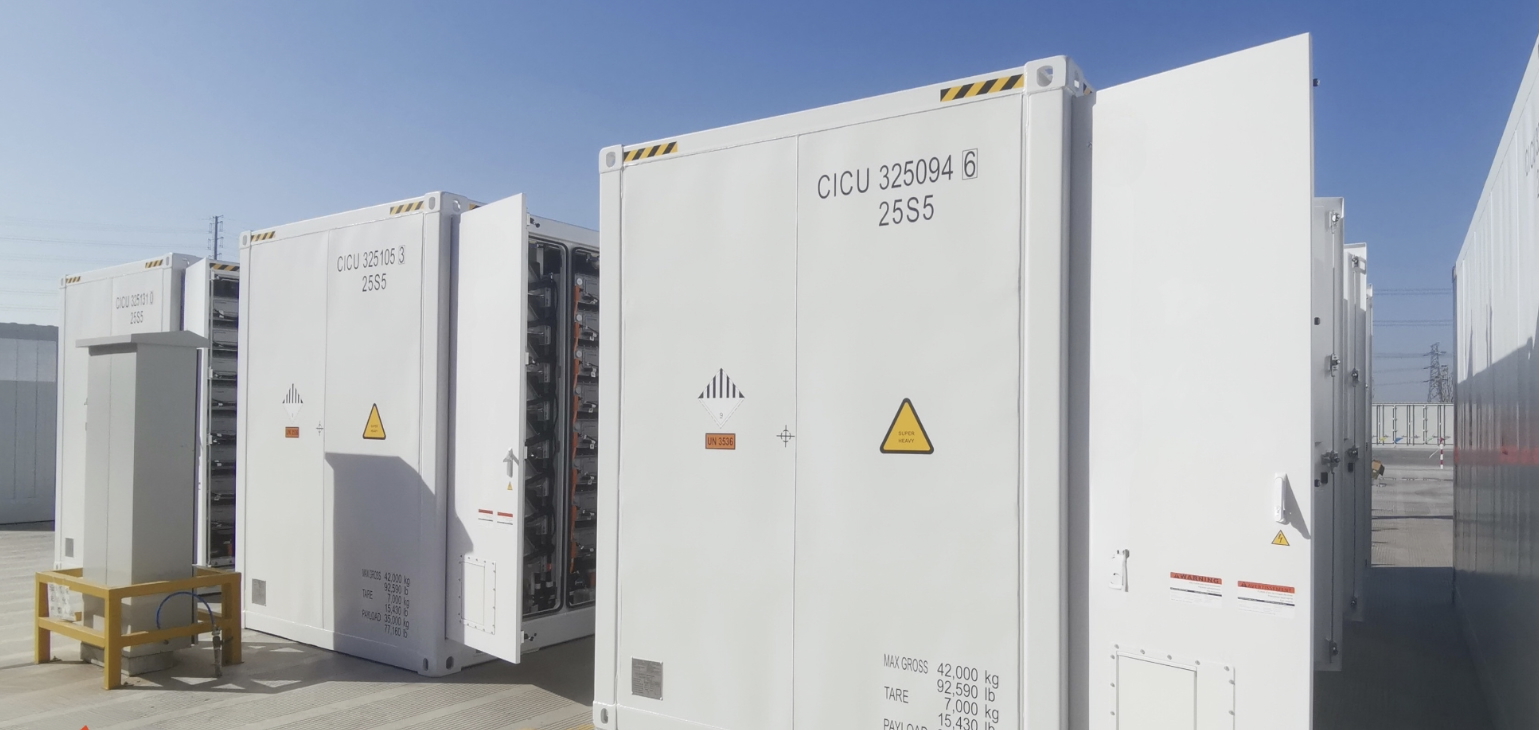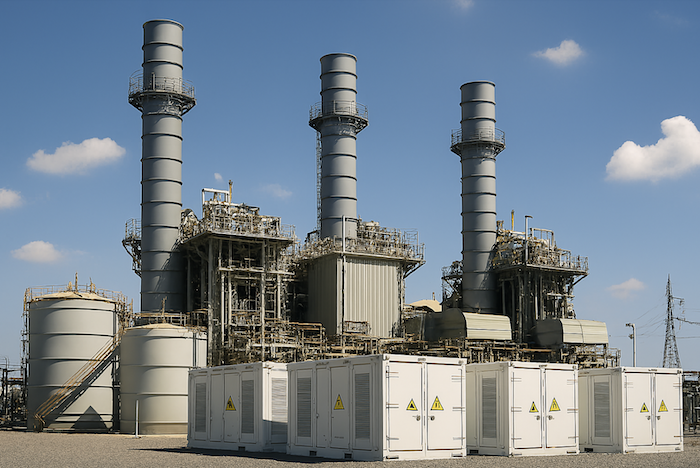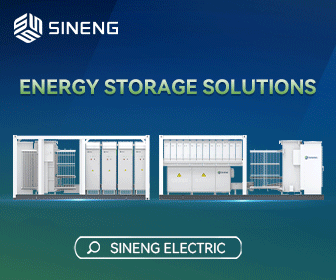A Perfect Fit: Energy storage at thermal peakers
Existing peaker power plants offer a significant development advantage for development of new Battery Energy Storage Systems (BESS). With accelerated interconnection review, reduced permitting risks, and lower capital costs, these sites are ripe for BESS deployment.
The electric grid is sized to meet conservative forecasts of peak demand, meaning significantly more capacity is installed than is needed for most of the year. To handle these peak periods, the system relies on peaker power plants that produce power only when demands and prices are at their highest. However, peakers are expensive to operate, inherently inefficient, and have a higher criteria-pollutant-emissions rate. In addition, they are often located near densely populated centers compared to baseload power plants.
Nowadays, many peaker power plants in the United States have utilization rates in the low single-digits. Co-locating a BESS with these facilities presents an excellent opportunity to increase utilization of their existing Large Generator Interconnection Agreements (LGIA), the contract with the Transmission Owner (TO), and the Independent System Operator (ISO), which enables an entity to inject electricity into the transmission system.

The value of LGIAs for BESS projects
LGIAs are both a valuable asset and a significant bottleneck for the development of BESS and renewable energy projects. Interconnection queues continue to grow and required upgrade costs are becoming increasingly untenable. Only 14 percent of BESS projects that entered the queue between 2000 and 2018 had reached commercial operation by 2023. The report also found that the average time spent in queues has “increased markedly”, with projects typically “taking up to five years from interconnection request to commercial operation”. The development costs of these BESS projects dying on the vine tie up capital during years of uncertainty and inflate the margins for those few projects that make it out to the other end. Meanwhile, the built-up queues of projects never reaching completion culminate in massive transmission upgrades and costs.
Example: In Texas, ERCOT reports an active queue of >400GW of interconnection requests in study on a system that currently hosts approximately 100GW.
Example: In Texas, ERCOT reports having >104GW of current executed LGIAs, however 95 percent of days in 2024 had a peak demand of 80.5GW or less. These under-utilized LGIAs may offer 20GW of accelerated interconnection opportunity.
CAISO’s MMA process, a fast-track alternative for accelerating BESS deployment
In some circumstances, the BESS addition may be substantially accelerated when compared to the traditional LGIA process. ISOs and TOs have processes in place to update the technology and operating characteristics behind an LGIA.
For example, the California Independent System Operator (CAISO) has a Material Modification Assessment (MMA) process that is typically used during the construction of a project. It is used as a design is finalized and then implemented during the operating life of a powerplant, as major components are rebuilt or replaced. The MMA process offers an alternative to the interconnection queue for projects to fast-track behind existing LGIAs, offering approvals in weeks-to-months instead of years.
The CAISO reported an average MMA study completion in 66 days in 2024. This was possible because the existing powerplant already had an existing LGIA, and injections at the site were already baked into system studies and planning.
One major caveat here is that a BESS also needs to charge. So, an MMA or similar process may find that a BESS rises to the level of a material modification requiring additional studies and/or upgrades. The MMA process provides a fast-track alternative to the standard queue, offering new BESS an accelerated path to operations.
Moreover, peaker power plants also offer BESS accelerated permitting pathways because the site is already in use as an industrial energy facility, potentially with singular jurisdictions under the authority of state energy commissions.

Co-locating BESS for improved emissions profile, capital expense optimization, and operational advantages
As discussed above, peakers are known for their relative inefficiency and high emissions output. As a result, they have been a target of past environmental justice policy initiatives. Just like solar PV plants have Power Purchase Agreements (PPAs) and BESS have Tolls, many thermal peakers have offtake agreements, and many of the buyers have specific emissions goals. In some instances, these offtakers may be willing to pay a higher rate to the existing thermal asset for its capacity attributes if a BESS is paired with the intention of reducing the runtime and emissions profile of the facility.
In addition to the accelerated development opportunity, peaker power plants can save on capital expenses. Peaker power plants already have the physical infrastructure that is required to inject the electricity into the transmission system, such as substations, overhead lines, and main power transformers (MPTs). A co-developed BESS can be sited behind this same infrastructure. This can substantially reduce the capital costs of the project and avoid the growing cost and lead times for MPTs. Even BESS operating expenses can be lower than those of a standalone project, since peaker power plants already have onsite staffing and maintenance requirements that can be upskilled to support the BESS.
Peaker power plant owners may also be at an operational advantage. The majority of BESS development to date has been paired with renewable energy projects that are relatively passive generation assets with output directly tied to weather conditions. On the other hand, thermal power plants require more active dispatch and consideration of fuel and opportunity costs. The experience with active dispatch strategies may be an advantage for BESS ownership, as BESS similarly have charging costs and require an active dispatch strategy to maximize revenues.
Conclusion
Co-locating BESS with an existing peaker plant is no longer just theory. This strategy has been successfully demonstrated by Middle River Power, recently acquired in association with BESS offtakers.
Co-locating new BESS with existing thermal peaker power plants is a natural match with significant development advantages, offering accelerated development timelines, reduced development risks, and reduced capital and operational costs. Many peaker power plant owners may not be familiar with the Tax Equity investment processes that can leverage substantial Investment Tax Credit and depreciation benefits available to new BESS.
William Lauwers is Head of Technology, Battery Energy Storage Systems for Enertis Applus+, a global, full-range engineering consultancy firm with extensive expertise in the renewable energy and storage sectors. He can be reached at [email protected].
Enertis Applus+ | www.enertisapplus.com
Author: William Lauwers
Volume: 2025 September/October









